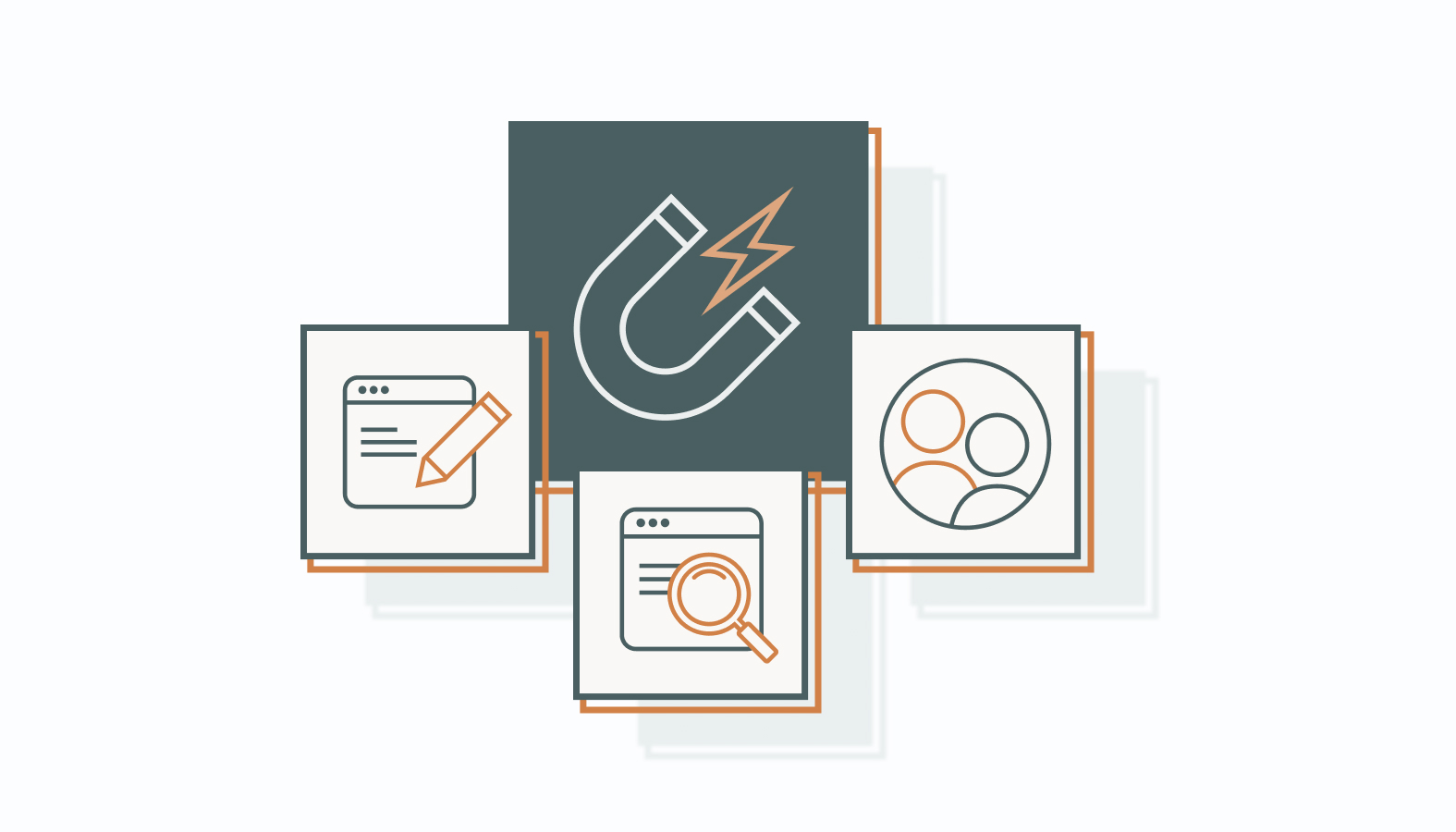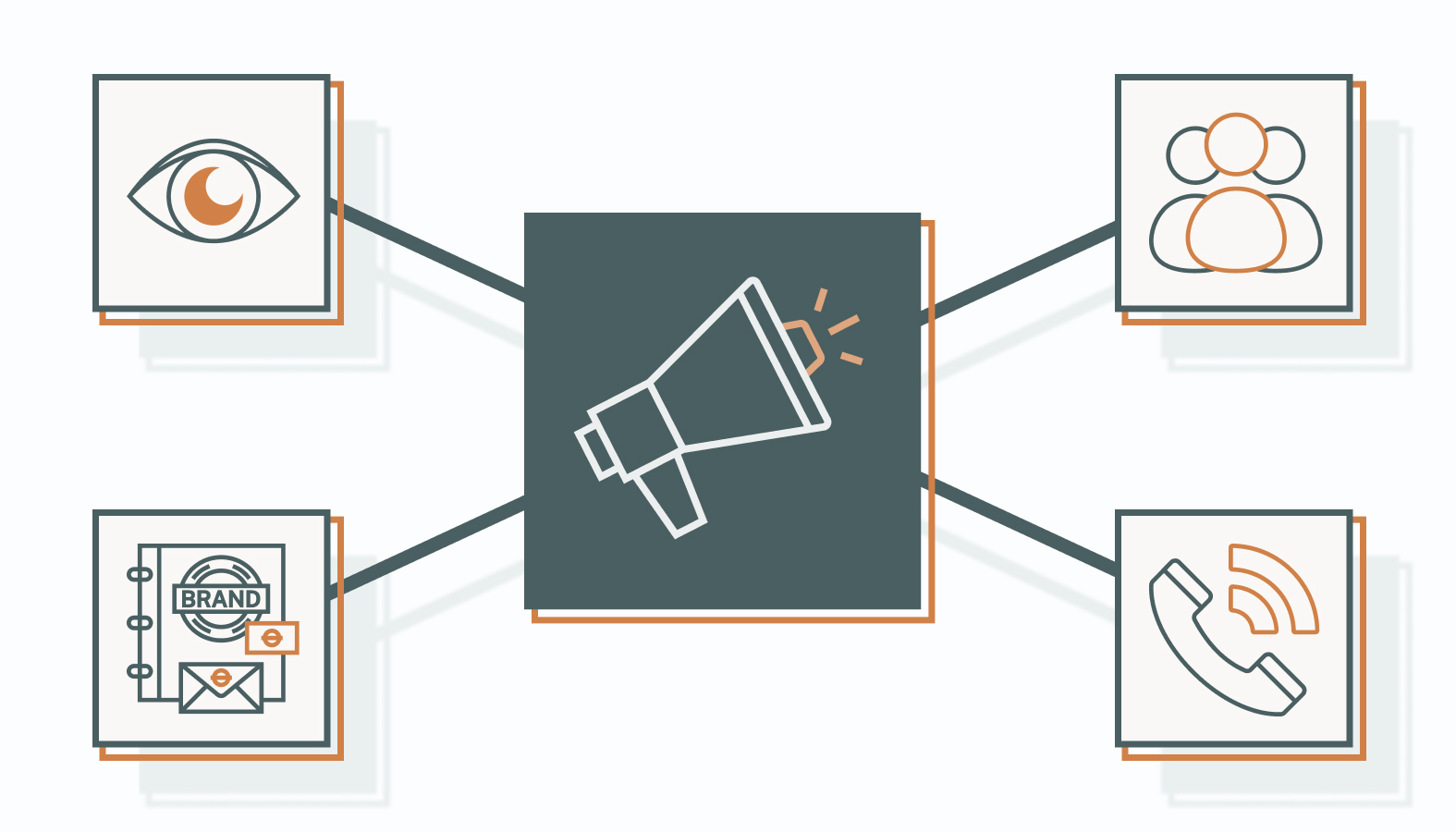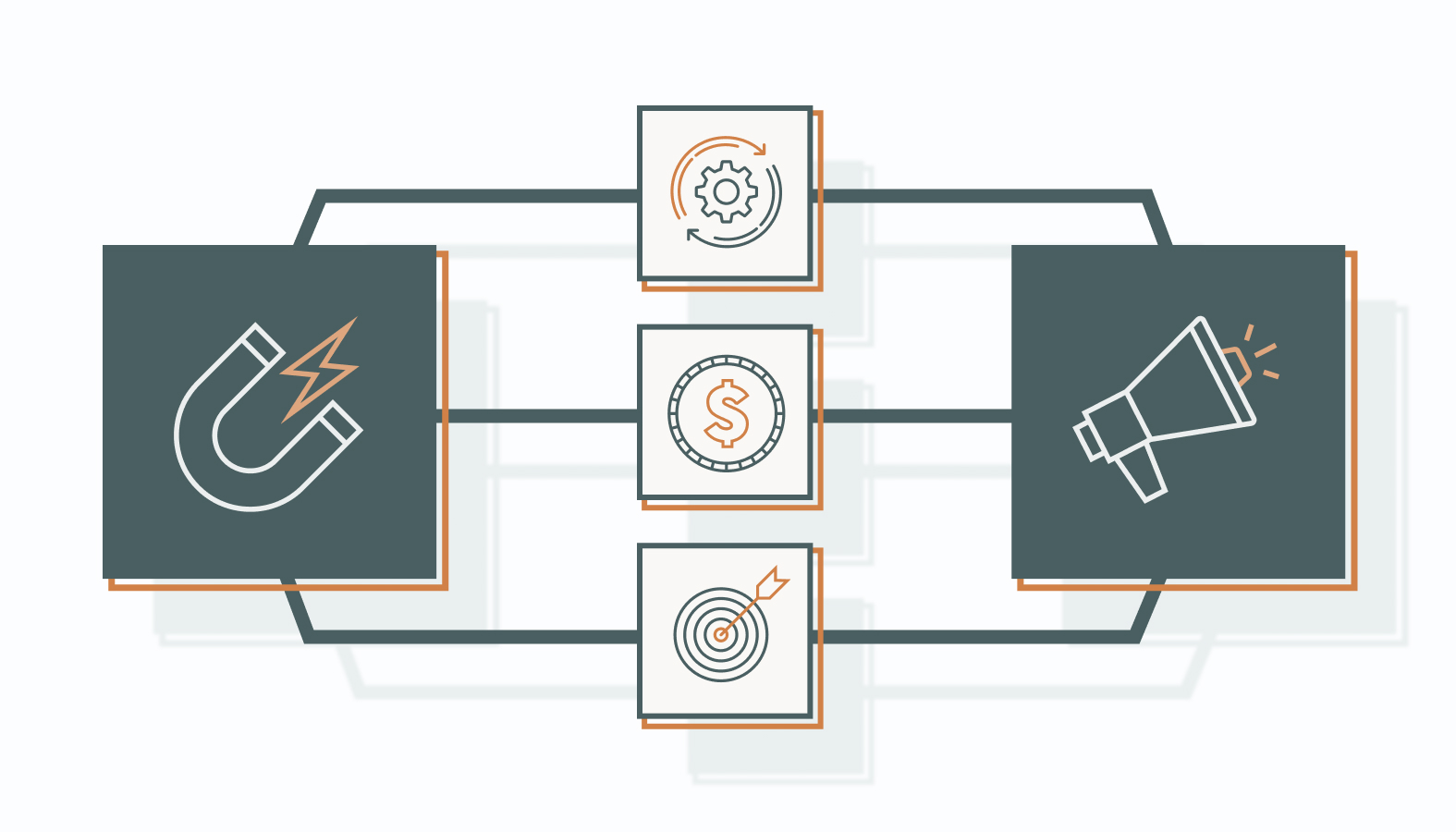In today’s fast-paced digital age, businesses face the challenge of reaching their target audience and standing out from the competition.
While traditional outbound marketing tactics like advertising and cold calling can be effective, they often require significant budget and effort. On the other hand, inbound marketing strategies, such as content marketing and SEO, can be more cost-effective but may take longer to yield results.
Balancing inbound and outbound tactics is the key to a successful marketing strategy. Combining the two allows businesses to maximize reach, generate more leads, and drive sales.
This guide will explore the benefits of both inbound and outbound marketing and provide practical tips for implementing a successful strategy.
Supercharge Your Strategy with Inbound Marketing
Inbound marketing is a customer-centric approach that prioritizes attracting and engaging potential customers through valuable content.
By creating high-quality content, optimizing it for search engines, and building strong customer relationships, businesses can attract high-quality leads, enhance their brand reputation, improve search engine visibility, and drive sustainable growth.
3 Core Principles of Inbound Marketing
To successfully implement inbound marketing, businesses must focus on these three core principles:
1) Content Creation: Develop engaging and informative content that addresses your target audience’s needs and interests. Content refers to blog posts, articles, videos, infographics, case studies, and more.
Create a content calendar to plan and schedule your content production. This will ensure a consistent flow of valuable content you can share on social media, email newsletters, and other relevant platforms to reach your target audience.
2) Search Engine Optimization (SEO): Optimize your content to rank higher in search engine results, making it easier for potential customers to find you. SEO involves several techniques, such as:
- Keyword research (identifying relevant keywords your target audience is searching for and incorporating them into your content).
- On-page SEO (optimizing your website’s on-page elements, such as titles, meta descriptions, and header tags, to improve search engine visibility).
- Off-Page SEO (building high-quality backlinks to your website from other reputable websites to boost your domain authority).
- Technical SEO (improving website speed, mobile-friendliness, and site structure to ensure your website is technically sound and optimized for search engines).
3) Relationship Building: Fostering strong relationships with your audience through personalized experiences and consistent communication.
Nurture leads and maintain brand visibility through email marketing. Actively engage with your audience on social media to build a robust online community. Provide exceptional customer support to foster trust and loyalty.
By mastering these three pillars, businesses can attract, engage, and convert potential customers into loyal advocates.
Is Inbound Marketing Right for Your Business?
Wondering if inbound marketing is the right strategy for your business?
Let’s explore the numerous benefits that can transform your marketing efforts and drive sustainable growth.
Increased Brand Visibility
Inbound marketing can significantly elevate your brand’s visibility by focusing on strategic SEO and social media marketing.
By optimizing your content for search engines and sharing it across social networks, you can reach a wider audience, drive brand awareness, and encourage more engagement.
Improved Lead Generation
Inbound marketing attracts high-quality leads by delivering targeted content that resonates with your ideal customer.
By nurturing these leads with personalized email campaigns and relevant content, you can effectively convert them into loyal customers.
Enhanced Customer Engagement
Inbound marketing’s personalized approach fosters deeper customer relationships.
By leveraging interactive platforms and delivering tailored content, businesses can spark meaningful conversations, increase customer engagement, and build trust and loyalty.
Long-Term Results
Inbound marketing delivers long-term results by consistently creating and optimizing valuable content. This approach maintains brand relevance, fosters lasting customer relationships, and drives sustainable growth.
Data-Driven Insights
Data-driven insights are crucial to inbound marketing. By tracking and analyzing user behavior, businesses can make informed decisions that refine strategies and drive success.
How to Overcome Common Inbound Marketing Pitfalls
While inbound marketing offers numerous advantages, businesses may face challenges that require strategic planning. These include:
Resource Allocation
Effective inbound marketing demands careful resource allocation, including budget and time management.
Businesses can optimize their efforts by prioritizing high-impact activities and leveraging automation tools to streamline processes.
Content Production
Maintaining consistent content quality requires a robust strategy aligned with business goals.
Techniques like content calendars and collaboration among content creators ensure a steady stream of engaging and relevant materials.
Technology and Tools
Choosing the right marketing tools is necessary for effective inbound marketing.
Customer relationship management (CRM) and marketing automation tools can help streamline operations and improve results.
Audience Understanding and Segmentation
Accurately identifying and segmenting target audiences is vital for tailoring marketing efforts to achieve maximum impact.
Businesses should focus on gathering data and insights to refine their understanding of audience preferences and behaviors and tailor their strategies to specific audience segments.
Unlock the Potential of Outbound Marketing
Outbound marketing is a classic approach that involves actively reaching out to potential customers. While it may seem traditional, it’s still relevant today, especially when you need quick results or want to boost brand awareness.
The Core Principles of Outbound Marketing
Outbound marketing is all about taking the initiative. It’s a proactive approach that involves directly contacting potential customers.
Think of outbound marketing as a classic sales pitch on a much larger scale. Traditional methods like television commercials, radio ads, direct mail, and telemarketing are all part of the outbound marketing toolkit.
At its heart, outbound marketing is about mass communication and visibility. The goal is to get your brand in front of as many people as possible.
Unlike inbound marketing, which attracts customers organically, outbound marketing actively seeks them out. It’s a shotgun approach, casting a wide net to capture a large number of leads.
Is Outbound Marketing Still Relevant?
While inbound marketing has gained significant popularity, outbound marketing still holds its ground.
Let’s explore the benefits of this traditional approach and why it remains relevant in today’s digital age.
Immediate Brand Visibility
Outbound marketing channels such as television, radio, and print offer the advantage of instant exposure to vast audiences, significantly boosting brand recognition.
For example, companies launching new products often leverage TV ads to rapidly build awareness and generate excitement. This strategy is particularly effective for time-sensitive campaigns that require quick visibility.
Ability to Reach a Wide Audience Quickly
One of the primary strengths of outbound marketing is its ability to broadcast messages to large audiences simultaneously.
This makes it perfect for campaigns that require a wide reach, such as limited-time offers or urgent announcements.
Businesses can use various media outlets to ensure their message is heard loud and clear.
Tangible Marketing Collateral
Physical marketing materials like brochures, flyers, and direct mail can reinforce brand presence and enhance recall.
These tangible items serve as lasting reminders of your brand and can be customized to create a more personalized customer experience. This personal touch can significantly enhance customer interactions and leave a lasting impression.
Proactive Customer Engagement
Outbound marketing empowers businesses to take the initiative in engaging potential customers, often before competitors do.
Strategies like event marketing and direct outreach campaigns can be effective in fostering brand awareness and building relationships.
By actively reaching out, businesses can introduce new products and services, generate interest, and close sales more swiftly.
Conquering Outbound Marketing Challenges
While beneficial, outbound marketing presents certain challenges that require careful management and adaptability.
Addressing High Costs
Outbound marketing strategies can be financially demanding, especially when utilizing high-cost media platforms.
To optimize budgets, businesses can negotiate media rates, prioritize high-impact channels, and explore alternative approaches that still deliver quality results.
Enhancing ROI Measurement
Tracking the return on investment (ROI) for outbound campaigns can be complex, but it’s crucial for success.
Combining traditional metrics with digital analytics can provide a clearer picture of campaign effectiveness and inform future strategies.
Combating Audience Saturation
In a saturated advertising environment, ad fatigue and overexposure can diminish the impact of marketing messages.
Creative approaches, such as innovative ad designs or unique messaging, can help businesses stand out and re-engage an oversaturated audience.
Improving Targeting Accuracy
Traditional outbound targeting can sometimes struggle to reach the right audience segments effectively.
Businesses can use data-driven insights and better audience segmentation to enhance targeting precision and ensure messages resonate with the intended demographic.
Adapting to Evolving Consumer Preferences
As consumer behavior shifts towards digital platforms and interactive content, it’s crucial for outbound marketing strategies to adapt.
By incorporating digital elements and engaging platforms, businesses can ensure continued relevance and enhance the overall effectiveness of their outbound efforts.
Inbound vs. Outbound Marketing: A Comprehensive Analysis
To achieve the best marketing results, it’s essential to understand both inbound and outbound marketing. These strategies have different strengths and weaknesses but can be incredibly powerful when used together.
Contrasting Approaches and Methodologies
Outbound and inbound marketing represent two distinct approaches to attracting and engaging customers.
Inbound Marketing: The Gentle Pull
Inbound marketing is a pull strategy that draws customers in. Creating valuable content and optimizing your online presence attract potential customers to your brand.
This approach emphasizes nurturing relationships and providing solutions that naturally lead consumers to your products or services.
Outbound Marketing: The Aggressive Push
On the other hand, outbound marketing is a push strategy that actively reaches a broad audience. This approach often relies on traditional advertising, telemarketing, and direct mail to grab attention and generate leads.
It’s a more aggressive approach that aims to cast a wide net and capture as many potential customers as possible.
A Balanced Approach
While these two strategies have different philosophies and methods, they can complement each other effectively. By understanding each’s strengths and weaknesses, businesses can create a well-rounded marketing strategy that drives growth and customer engagement.
Financial Overview: Costs and Returns
Let’s explore the financial implications and ROI for both inbound and outbound marketing strategies:
Cost and ROI
- Outbound Marketing: Requires a significant upfront investment for traditional media like TV, radio, print, and direct mail.
- Inbound Marketing: Initially less expensive but requires ongoing investment in content creation, SEO, and digital platforms. This approach can be more cost-effective for businesses that commit to developing a robust digital presence over time.
Long-Term vs. Short-Term Results
- Inbound Marketing: Offers higher long-term ROI by building lasting relationships and attracting organic traffic. By attracting interested prospects organically, businesses can achieve more sustainable growth with better conversion rates.
- Outbound Marketing: Delivers quicker results, making it ideal for short-term campaigns or immediate sales boosts.
Measuring Success
- Inbound Marketing: Tracks metrics like website traffic, lead quality, and conversion rates.
- Outbound Marketing: Relies on immediate indicators like reach and engagement levels.
Evaluating Audience Reach and Targeting
When reaching your target audience, inbound and outbound marketing offer distinct approaches.
Inbound Marketing: A Personalized Touch
Inbound marketing excels at connecting with niche audiences. Businesses can attract and engage highly qualified leads by creating content tailored to specific demographics and interests. This personalized approach fosters deeper relationships and drives higher customer satisfaction.
Outbound Marketing: Casting a Wide Net
Outbound marketing is designed to reach a broad audience quickly. While this can be effective for generating quick leads, it may not always be the most efficient way to target specific segments.
Optimizing Your Approach
Leveraging data analytics is key to maximizing the impact of both strategies.
By analyzing audience behavior and preferences, businesses can refine their targeting efforts and ensure their messages resonate with the right people at the right time.
Determining the Best Marketing Strategy for Your Business
To achieve your business goals, you must create the best marketing strategy. This involves understanding your industry, target audience, and the unique strengths of both inbound and outbound marketing.
Key Considerations for Choosing a Strategy
Choosing a marketing strategy involves evaluating several critical factors that ensure alignment with your business goals and market conditions.
Budget Considerations
To maximize your marketing ROI, you must allocate your budget wisely.
While initially less expensive, inbound marketing requires ongoing content and digital marketing investment.
On the other hand, outbound marketing demands significant upfront costs for traditional media.
You can optimize your marketing spend by carefully considering your budget and prioritizing high-impact activities.
Target Audience Preferences
Understanding your audience’s behaviors and preferences is fundamental to selecting the right marketing channels and tactics for your business.
Analyze your target market’s demographics, interests, and media consumption habits to craft campaigns that resonate.
For instance, younger audiences may engage more with digital and social media content, while older demographics might respond better to traditional advertising methods.
Competitive Landscape
Keeping an eye on your competitors can provide valuable insights into industry trends and consumer preferences.
By understanding their strategies, you can identify opportunities to differentiate your brand and gain a competitive edge.
Business Objectives
Your marketing strategy should be a powerful tool to drive your business forward.
Whether you’re aiming to boost brand awareness, increase sales, or foster customer loyalty, your marketing efforts should be directly aligned with your overall business objectives.
By focusing on your goals, you can ensure that every marketing initiative contributes to your bottom line.
Blending Inbound and Outbound Marketing Approaches
Combining the best of both worlds can create a powerful marketing strategy that drives results. Integrating inbound and outbound marketing can amplify your reach, improve targeting, and enhance brand consistency.
Here are some key strategies to consider:
- Consistency is Key: Ensure your messaging and branding are consistent across all channels, whether a social media post or a TV commercial.
- Data-Driven Decisions: Use analytics to measure campaign performance and make data-driven adjustments to optimize your strategy.
- A Holistic Approach: By blending inbound and outbound tactics, you can create a seamless customer journey that drives engagement and conversions.
Implementing these strategies can help you create a robust marketing plan that helps you achieve your business goals and stay ahead of the competition.
And if you’re looking to combine inbound and outbound marketing strategies with a new plan or revamp an existing one, schedule a candid conversation with one of our marketing experts to help you grow, thrive, and reach new heights.










